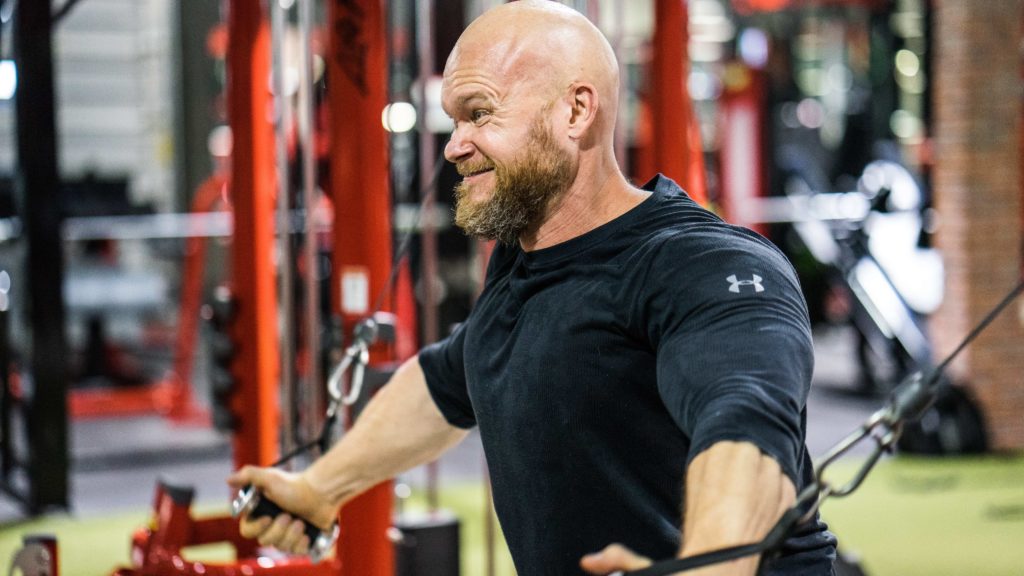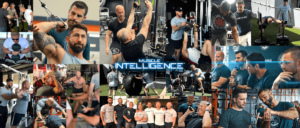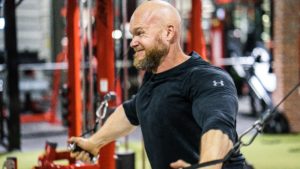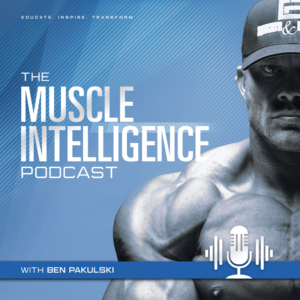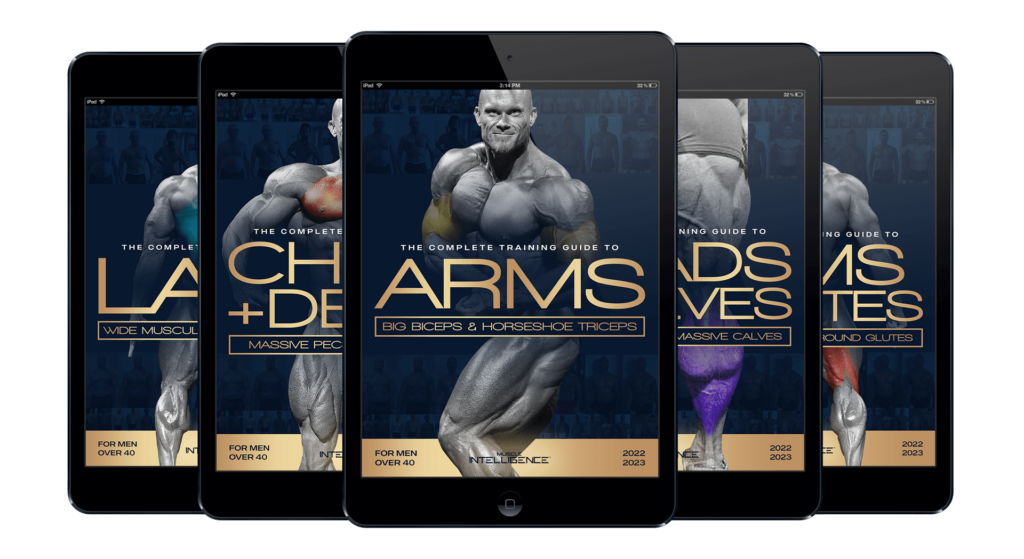By Ben Pakulski
If you’re anything like me, you spend about two hours in the gym every day.
Of that two hours, the average set lasts 20-30 seconds. (Again, with an average of eight reps and each rep is usually four seconds for most people). Let’s assume an average set is 30 seconds. If you’re an overachiever, you likely knock out 25-30 sets per workout. That’s a lot.
Math suggests that on the high end, within a two-hour workout, 15 MINUTES TOTAL is spent actually doing WORK (30 sets x 30 seconds= 15 mins).
Let’s assume that’s a very low-end assessment, and maybe you’re doing 40-60 seconds of time under tension per set. like I often advocate for beginners and intermediate athletes. Even 30 sets, done for 60 seconds is 30 minutes of total work during a very intense workout.
That means most of us are spending 60-90 minutes at the gym doing something other than the work that creates a change in our body.
I’m not here to lecture you that you should be doing more. In fact, nothing even close.
I simply want to introduce you to an idea that is going to increase your ability to lift more, sustain more high-end energy, perform better, and achieve muscle-building results faster—and it’s not going to cost you a dime.
I’ve been implementing this for years in my training and with my high-level clients to get significantly more results out of the working sets we’re already doing.
You see, we mindlessly follow the paradigm of “rest” between sets, and short of allowing your energy to replenish, resting between sets doesn’t do anything to improve total quality of work, or improve the total amount of muscle-building work.
This old paradigm is pulled directly from high-level athletes, so people assume it’s what we should be doing between sets in the gym, but it’s not.
I’m not a race car guy, but imagine top race car drivers mid-race pulling into the pit-stop just to hop out of the car and take a rest without doing anything to upgrade the car. Cool, she would get to relax a minute, but logic would say it would be a smart idea to change the tires, align the wheels, maybe add some gas—basically, a checklist of things that would allow the driver to get back out there and go even faster after the quick rest.
Well, if your goal is to push hard during the set, why are you sitting around between sets, or worse yet, scrolling through some useless social media page?
What if I were to tell you there are powerful things you can do between sets that are simple, fast, and effective at upgrading your ability to do more work in your working sets without cutting into your rest and recovery at all?
Thinking through a powerful inter-set routine is a HUGE opportunity to not only get more out of the next set, but also to upgrade your whole system to decrease your perceived effort so the things you’re doing actually feel much easier for you. Think of it like stepping on the gas and someone has aligned your wheels, changed your tires and given you an extra shot of NOS to power through the rest of your session.
You may have heard me talk about this on the Muscle Intelligence podcast. Between sets, the first thing I do for myself (or with my client) is quickly go through a mental checklist and ask a single question:
What made that set stop?
Think about it.
Most sets do not stop because the working muscle stopped. They stop for any number of reasons other than the working muscle: focus, fatigue, breathing, pain, stability, weakness, etc.
I squatted this morning, so for the sake of an example, let’s look at the checklist for a squat:
- Stability at hip
- Stability at the trunk/spine
- Stability at foot/ankle
- Breathing fatigued
- Muscle burn
- Mental breakdown/lost focus
- Pain
- Lost balance
- Quads and glutes could no longer contract
That should more or less cover the reasons why someone would stop.
I intentionally put quads and glutes fatiguing at the bottom because in order to even get to that point you have to be so well trained in all the other parts that they are on unconscious autopilot.
I would boldly guess that over 90 percent of people are not skilled enough at these prerequisite skills to enable them to use a squat to get to where the real gains live: that is, fatiguing the working muscle.
This checklist exists for every exercise. The more complex the exercise (compound exercises), the more points on the checklist that must be checked off before working the intended muscle is fully possible.
A couple options address these points and ultimately ensure the muscle you’re intending to train is in fact being trained:
1) Simplify the exercise.
2) Create a pre-set, or inter-set routine to reduce the likelihood of these points breaking down.
Simplifying the exercise might look like cutting down the number of muscles that the body has to stabilize internally by adding an external source of stability (machine, wall, bench, etc.) An example is moving from a squat to a hack squat.
Pre-set or inter-set routines look like mobility, stability, and breathing practices that quickly upgrade the system and prepare the body for higher amounts of specialized work.
The concept of “warming up” is outdated and antiquated. Think of going for a run for a mile in the heat, and then coming into the gym to squat 500lbs. You’ll be warm, but the nervous system will not be prepared to perform at a high level.
Due to time constraints between sets, I suggest you stick with the top two most impactful inter-set habits to upgrade performance. This could be activating a muscle, doing some mobility or PNF work, and/or immediately gaining control of your breath with a cadence that suits your objective.
Specific to breath, get back to a nasal only, six second in, six second out cadence immediately after each set to amplify the recovery state in the body. You can decide to increase this immediately before a set if you need a little extra boost.
What you do BEFORE you train, and BETWEEN sets matter for performance. Don’t mindlessly waste that valuable time. Consciously pay attention during your set so that you can intentionally choose what actions between sets will immediately lead to upgraded performance in the next set.

